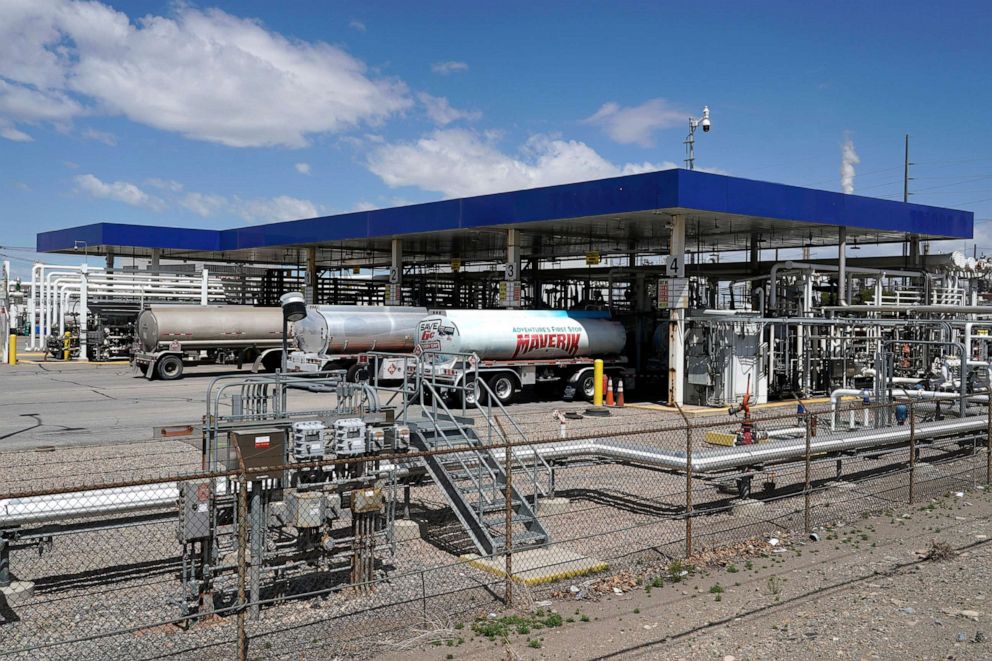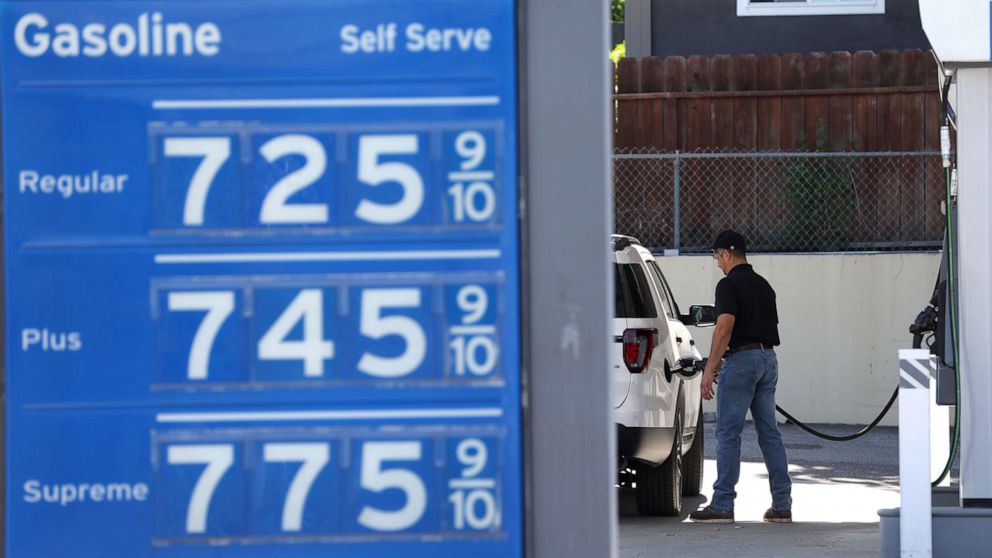Why gas prices are continuing to hit record highs
As car travelers embark on trips over Memorial Day weekend, gas prices may shock them — even if they went to the pump just a few weeks ago.
The average price of a gallon of gas on Friday reached nearly $4.60, up some 46 cents since a month ago, according to data compiled by AAA. For the first time, the average price for a gallon of gas exceeded $4 in all 50 states, AAA data shows.
Gas prices could rise even higher over the coming weeks as the summer travel boom brings more people to the pump, industry analysts told ABC News. The spike in demand coincides with a shortage of crude oil supply amid the Russian invasion of Ukraine, which prompted a widespread industry exit from Russia that has pushed millions of barrels of oil off the market.
Meanwhile, a longstanding oil supply shortage endures from a pandemic-induced production slowdown that hasn’t caught up with a bounce back in demand, the experts said.

“There has been a widening imbalance between supply and demand,” Patrick De Haan, the head of petroleum analysis at GasBuddy, told ABC News.
“When we see energy prices going up, we know it’s going to cost us,” he said. “Whether you want to see it or not, those LEDs at your corner gas station burn an image into your brain about how you feel about the economy.”
The reasons for high gas prices go back to the outset of the pandemic in spring 2020.
As people isolated themselves at home, car use and gas consumption plummeted. The average number of daily personal car trips taken by U.S. auto owners fell by 45% in April 2020 compared to the same month the year prior, a AAA study last year found. A similar trend affected drivers in many countries across the globe. As worldwide demand fell, the price of oil dropped and producers cut output, De Haan said.
But by March of this year, oil demand had fully recovered to pre-COVID levels, Peter McNally, the global sector lead for industrials and energy at research firm Third Bridge, told ABC News. Crude oil supply, however, has only recovered to 97% of pre-COVID levels, leaving a sizable shortfall, he added.
“Three percent doesn’t sound like a lot but inventories are very low,” McNally said.
The pandemic-induced lag in oil supply has coincided with the Russian invasion of Ukraine, which began on February 24. Since then, oil companies and traders exited Russia, taking millions of barrels of oil off the market.
Without their usual supply of crude, refineries can’t produce enough gasoline, Ramanan Krishnamoorti, a professor of petroleum engineering at the University of Houston, told ABC News.
“One of the most obvious ways the feedstock for refineries has changed has been through the Ukraine-Russia war, where some crude that comes through Russia is no longer coming in,” Krishnamoorti said.
In March, the U.S. and its allies announced the collective release of 60 million barrels of oil from their strategic reserves over the following months, which sought to alleviate some of the supply shortage and blunt price increases.

But the disruption from the invasion has come at a particularly vulnerable time for the gasoline market, as demand is set to increase over the summer, experts said.
Over the first three months of the year, the U.S. consumed about 8.4 million barrels of gas per day; but over the summer months, that consumption will rise to 9.2 million barrels per day, an increase of nearly 10%, according to the US Energy Information Administration, or IEA. The convergence between the shortage of supply and the increase in demand has sent gasoline prices skyrocketing, McNally, the global lead for energy, said.
“It’s the wrong time of year to have something like this happen as you go into the peak demand months,” he said.
The coming months likely do not bode well for gas prices, the experts said.
Two of the experts, De Haan and Krishnamoorti, said the average national price could reach as high as $5 per gallon, and would rise even further if a hurricane damages oil refinery infrastructure and further limits supply.
McNally did not predict an exact price increase but cautioned: “It could be rough on consumers.”
A price increase would do damage to people’s pockets this year. Anticipating a price increase over the summer, the EIA predicts that the average U.S. household will spend about $2,945 on gasoline this year, which when adjusted for inflation, is $455 or 18% more than the average household spent last year.
“Every mile traveled gets amplified by the cost of gasoline,” said Krishnamoorti, the professor of petroleum engineering.



